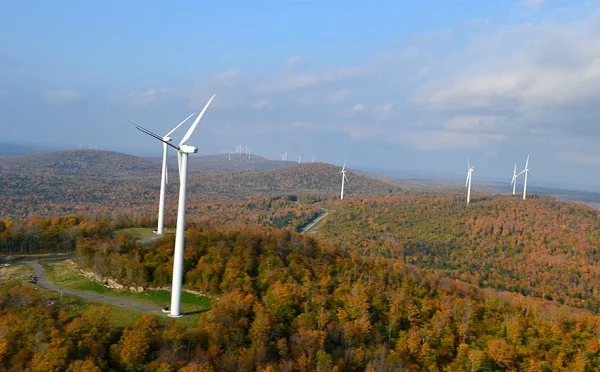One of the funny things about the wind-power-and-birds controversy is that the folks who most frequently raise the issue are political conservatives who otherwise show little regard for the state of wildlife or the environment.
Meanwhile, longstanding, dedicated conservationists – while not shy about objecting to wind power regulations they see as ill-conceived – more often than not can be found looking for ways to ensure that wind power and wildlife peacefully coexist.
On the latter point: Maine Audubon. Bird folks for sure, they’re out with a report [PDF] that says 84 percent of the 1.1 million acres estimated to be sufficiently windy for power generation in the state could be used “with minimal impact on the wildlife resources we analyzed.”

The 60 MW Rollins wind farm in Maine (image via First Wind)
“Maine Audubon believes that the findings of this study demonstrate that we can meet Maine’s wind energy goals while avoiding impacts to important wildlife and habitat resources,” the group said in a summary of the report.
A Maine law passed in 2003 calls for 3,000 megawatts of land-based wind power by 2030, with an interim goal of 2,000 by 2015. But Maine had just 431 MW installed as of the end of 2012, according to the U.S. Department of Energy, and the governor, who regularly mocks wind power, has tried toslow the installation of new turbines.
Of the 933,490 acres Maine Audubon sees as potential safe for wind power, some 418,160 acres are in areas designated by the state for expedited permitting for wind. It’s those areas where Maine Audubon would like to see companies put the 600 new turbines that will be needed to reach its target. The group recommends:
- Siting new wind projects in the expedited permitting area away from known and valuable wildlife resources, including but not limited to those analyzed in this report.
- Siting new wind projects to first avoid, then minimize impacts, with the last resort to mitigate wildlife impacts only if absolutely necessary.
- Avoiding high elevation sites with Rare/Exemplary Natural Communities, modeled Bicknell’s Thrush Habitat, as well as those areas designated as Critical Summits.
- Careful analysis of any new wind projects within two miles of the coast, due to the high potential for overlap with known wildlife resources.






